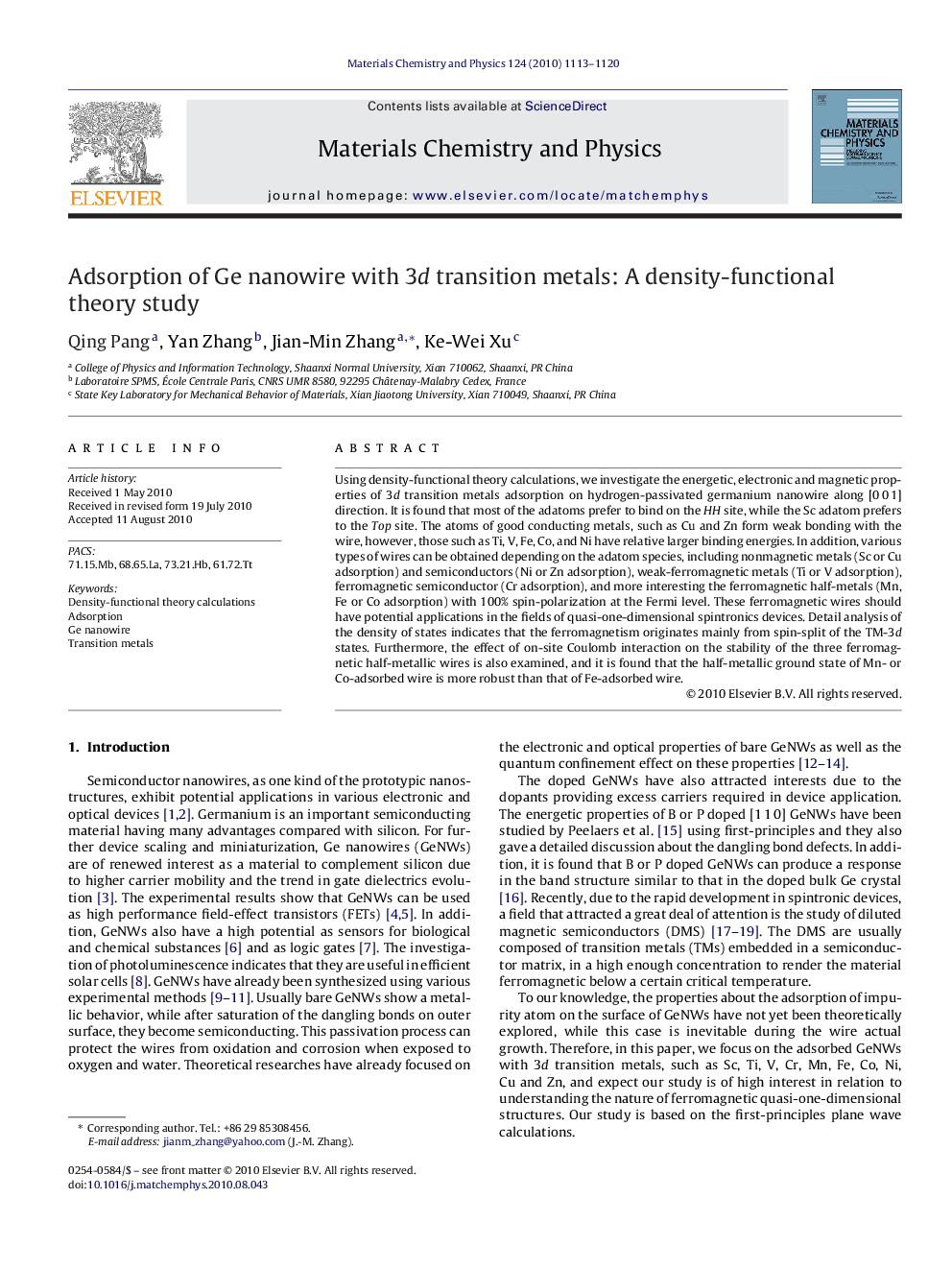| Article ID | Journal | Published Year | Pages | File Type |
|---|---|---|---|---|
| 1524454 | Materials Chemistry and Physics | 2010 | 8 Pages |
Abstract
Using density-functional theory calculations, we investigate the energetic, electronic and magnetic properties of 3d transition metals adsorption on hydrogen-passivated germanium nanowire along [0Â 0Â 1] direction. It is found that most of the adatoms prefer to bind on the HH site, while the Sc adatom prefers to the Top site. The atoms of good conducting metals, such as Cu and Zn form weak bonding with the wire, however, those such as Ti, V, Fe, Co, and Ni have relative larger binding energies. In addition, various types of wires can be obtained depending on the adatom species, including nonmagnetic metals (Sc or Cu adsorption) and semiconductors (Ni or Zn adsorption), weak-ferromagnetic metals (Ti or V adsorption), ferromagnetic semiconductor (Cr adsorption), and more interesting the ferromagnetic half-metals (Mn, Fe or Co adsorption) with 100% spin-polarization at the Fermi level. These ferromagnetic wires should have potential applications in the fields of quasi-one-dimensional spintronics devices. Detail analysis of the density of states indicates that the ferromagnetism originates mainly from spin-split of the TM-3d states. Furthermore, the effect of on-site Coulomb interaction on the stability of the three ferromagnetic half-metallic wires is also examined, and it is found that the half-metallic ground state of Mn- or Co-adsorbed wire is more robust than that of Fe-adsorbed wire.
Related Topics
Physical Sciences and Engineering
Materials Science
Electronic, Optical and Magnetic Materials
Authors
Qing Pang, Yan Zhang, Jian-Min Zhang, Ke-Wei Xu,
